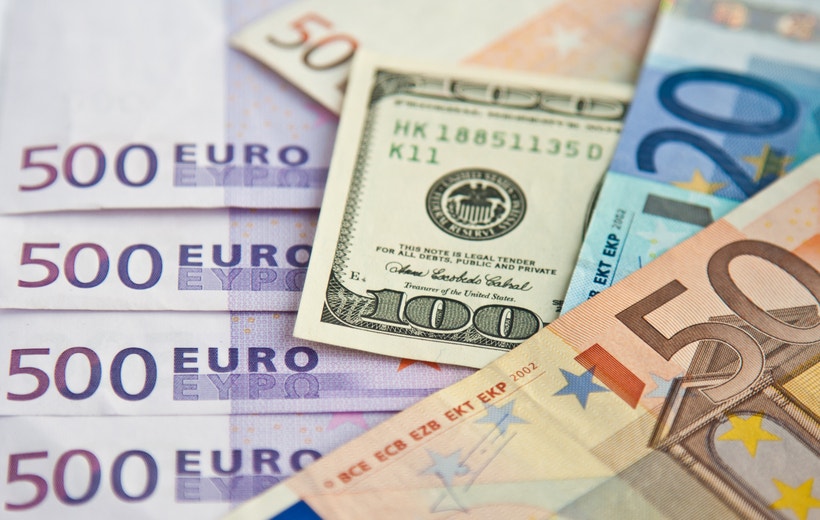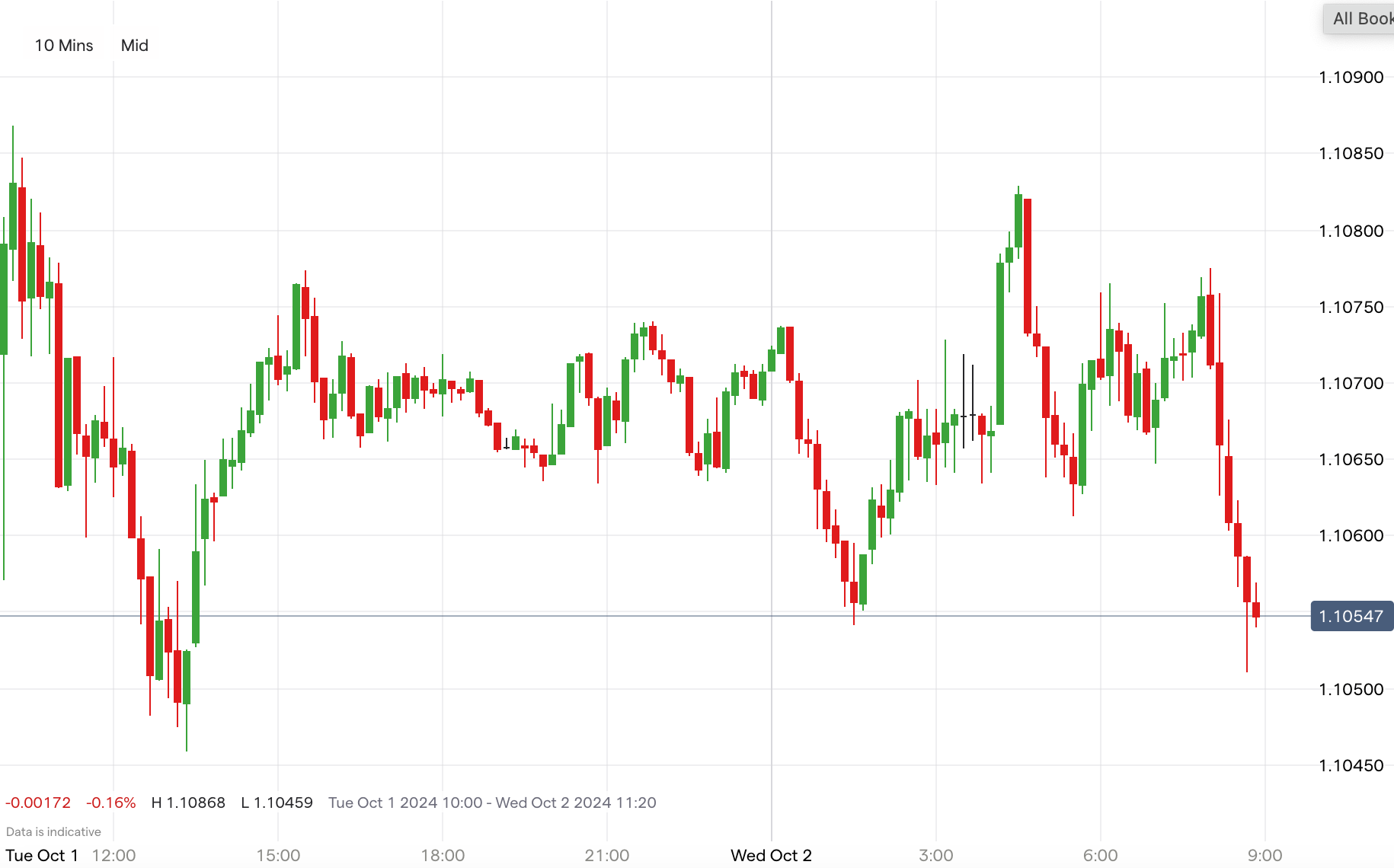EUR/USD collapses as Iran launches missile attack
Geopolitical tensions and economic indicators drive the US dollar above 101; Euro falls below 1.1100 after inflation data, while oil and gold prices surge amid Israel-Iran turmoil. ECB may loosen monetary policy.

Key points
- US dollar index strengthens above 101 amid geopolitical tensions and positive economic indicators
- EUR/USD falls below 1.1100 after Eurozone inflation data release of 1.8%
- WTI crude oil price surges to $71 per barrel, a 4% increase from the previous week
- Gold prices rise above $2,640 per ounce due to safe-haven demand
- ECB may consider monetary policy loosening as Eurozone inflation falls to the lowest rate since April 2021
US dollar index above 101 amid geopolitical tensions and positive economic indicators
As of this morning, the US dollar index has strengthened above 101 after reports of Iran launching a ballistic missile attack on Israel. This is most likely due to the dollar’s reputation as a safe-haven currency in the face of geopolitical turmoil; historically, investors flock to the US dollar during unstable times to safeguard their investments. Additionally, the dollar has performed well after Federal Reserve Chair Jerome Powell alluded to smaller interest rate cuts following the recent 50 basis point reduction announcement. Furthermore, the number of US job openings has exceeded expectations, climbing to 8.04 million, contributing to the dollar's upward momentum.
EUR/USD sinks below 1.1100 after inflation data release
Upon the Eurozone inflation data release of 1.8%, the euro slipped to 1.10561 upon this weaker-than-expected rate. With these softer figures, the ECB might proceed with monetary policy loosening, which could impact the Euro; lower inflation typically reduces a currency's purchasing power, influencing investor sentiment. The ECB could consider reducing interest rates or implementing other accommodative measures to stimulate economic activity. While these actions may weaken the Euro, lower interest rates could also support economic growth by making borrowing cheaper for businesses and consumers.
EUR/USD price history

Crude oil and gold prices surge amid Israel-Iran turmoil
Upon reports of the ballistic missile attack on Israel by Iran, West Texas Intermediate (WTI) crude oil surged to $71 per barrel, a 4% increase from the previous week. This sharp rise in prices can be attributed to heightened concerns over potential disruptions in the global oil supply; geopolitical instability in a region critical to oil production often leads to supply fears, driving up prices. Additionally, gold prices have risen above $2,640 per ounce for the opposite reason—its status as a safe-haven asset amid this turmoil. The increased demand for gold in the wake of the missile attack underscores its role as a refuge for capital in unstable times.
What’s next for EUR/USD?
With Eurozone inflation falling below expectations to 1.8%, the lowest rate since April 2021, the focus now shifts to the European Central Bank (ECB). The ECB may consider monetary policy loosening to stimulate economic activity, potentially reducing interest rates or implementing other accommodative measures; while this could weaken the euro by making it less attractive to investors, it could also support economic growth by encouraging borrowing and investment. On the other hand, global markets are reacting to heightened geopolitical tensions. The US dollar index has strengthened above 101, bolstered by its safe-haven status amid reports of Iran’s attack on Israel and strong US economic data and expectations. As geopolitical instability persists, crude oil and gold prices have also surged, reflecting concerns over potential disruptions in global oil supply and increased demand for safe-haven assets.
How to trade EUR/USD
- Open an account to get started, or practice on a demo account
- Choose your forex trading platform
- Open, monitor, and close positions on EUR/USD
Trading forex requires an account with a forex provider like tastyfx. Many traders also watch major forex pairs like EUR/USD and USD/JPY for potential opportunities based on economic events such as inflation releases or interest rate decisions. Economic events can produce more volatility for forex pairs, which can mean greater potential profits and losses as risks can increase at these times.
You can help develop your forex trading strategies using resources like tastyfx’s YouTube channel. Our curated playlists can help you stay up to date on current markets and understanding key terms. Once your strategy is developed, you can follow the above steps to opening an account and getting started trading forex.
Your profit or loss is calculated according to your full position size. Leverage will magnify both your profits and losses. It’s important to manage your risks carefully as losses can exceed your deposit. Ensure you understand the risks and benefits associated with trading leveraged products before you start trading with them. Trade using money you’re comfortable losing.
